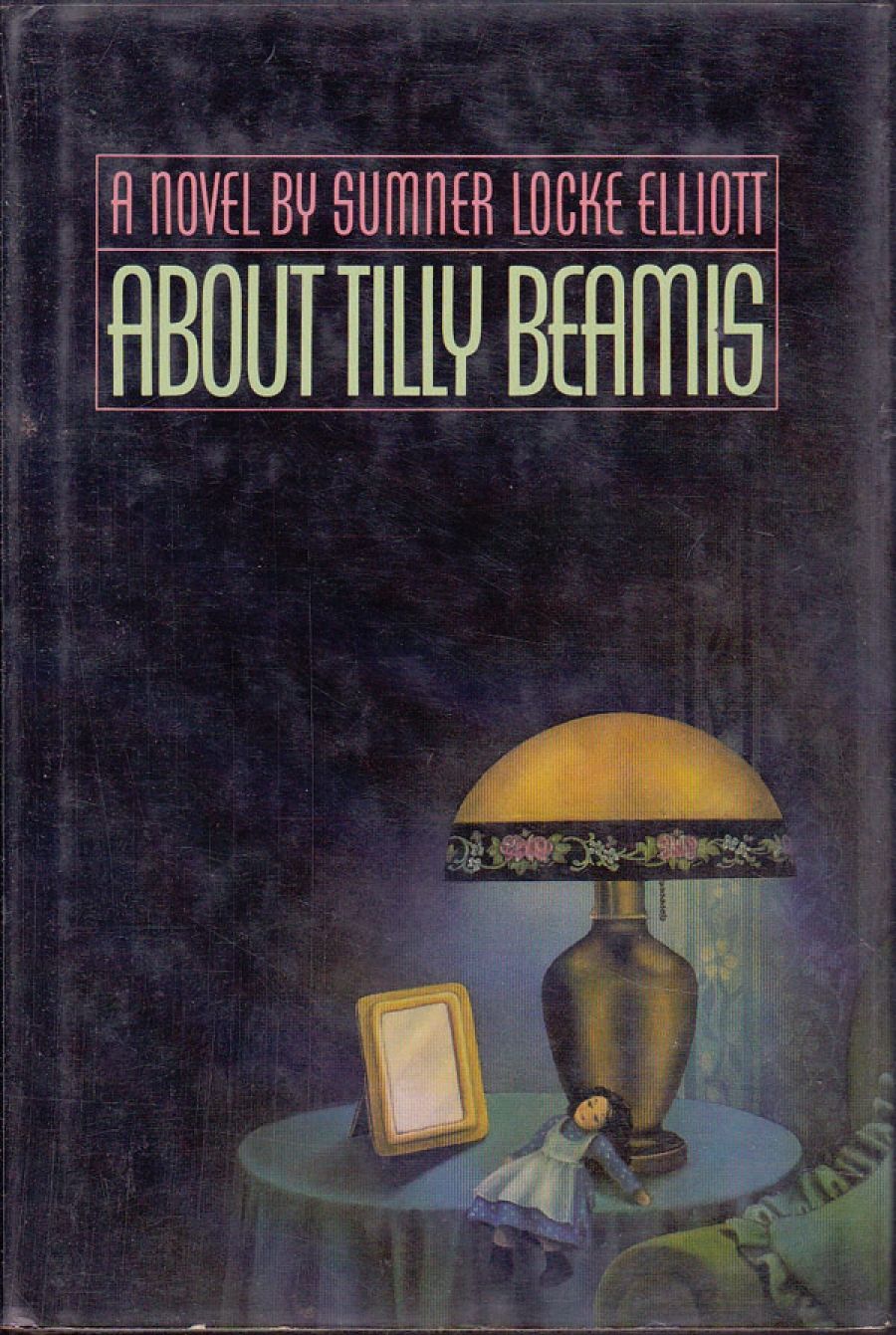
- Free Article: No
- Contents Category: Fiction
- Review Article: Yes
- Online Only: No
- Custom Highlight Text:
Expatriate Australian writer and now naturalised American citizen Sumner Locke Elliott seems to have written this novel to dramatise his own sense of cultural displacement and identity. Cutting back and forth in time (between 1978 and 1950) and place (Australia and the United States), it traces the attempt of a woman named Tanya van Zandt in New York to retrace the whereabouts and identity of an Australian, Tilly Beamis, who turns out to be (it does not take the alert reader long to recognise) her actual former self.
- Book 1 Title: About Tilly Beamis
- Book 1 Biblio: Pavanne, 252p., $6. 95 pb
The novel opens with a man in New York glimpsing a woman who bears a startling resemblance to someone who had disappeared mysteriously twenty-three years before on the eve of their wedding. The narrative goes back in time to reveal that after experiencing two humiliating sexual rejections by men, first a country yokel in her adolescence and then the man she falls in love with and gives herself to, the generous, warm-hearted Tilly forces herself to become frozen in feeling, immune to pain or personal response of any kind – ‘safe from all loving’, as she puts it.
A flukish set of circumstances, involving a bus crash in which everyone is killed except Tilly, who had been accidentally trapped in a restaurant toilet, gives her a unique opportunity to start life again with a new identity, and she seizes it eagerly; she becomes Tanya Boyd.
The theme of the novel is a rather pale echo of that of Patrick White’s The Twyborn Affair, and occasionally one catches hints of White in the writing itself even to incidental details such as speaking of a character eating a mutton chop rather than lamb. Elliott himself seems to be as uncertain of his identity as some of his characters. Early in the novel, when the expatriate Tanya returns to the Sydney of her youth, he indicates her (or his own) unsureness by interpolating an alternative word: ‘baggage (luggage here?)’ ‘bills (notes?).’ This is in character, if rather irritating, but even in the excerpts from Tilly’s 1950 Australian notebook we find spellings like ‘practicing’.
The self-conscious, often anachronistic nature of the writing comes out in other ways too: the use of awkward words like ‘disconcertion’ and the jarring American colloquialisms such as ‘spooky flip flaps’. And does anyone in Australia still use words like ‘Righty-o’, ‘dinky-di’ and ‘bonza’ (which Tanya doesn’t even understand)? Or did they drink ‘Pilsener’ in the fifties?
Minor details perhaps, but they fill the reader with disconcertion. Perhaps more off-putting is the perfunctory way in which the author resolves what was in many respects an absorbing dilemma. Writing in her diary the young Tilly had noted, ‘I can’t help being myself’ but had then added violently, ‘OH NO?’ At the end of the novel the young man Tanya had brought out from Australia to New York writes to her:
P.S. I thought about that other girl you told about yesterday and I think that what happened was you weren’t able to drown her completely because she is the good in you’ve seen.
OH YEAH? Elliott is very prone to spell out this theme in the novel, here and elsewhere.
Nevertheless, it is a skilfully manipulated narrative, and there are some fine portraits among the minor characters, especially Tanya’s grotesque husband van Zandt. One of the strange things about Elliott’s writing is that he is much more interesting and credible writing about the bizarre than about the normal.


Comments powered by CComment